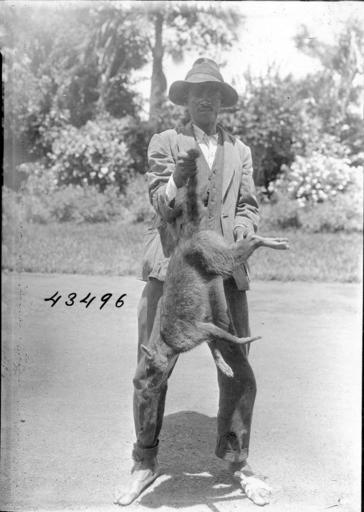MAKE A MEME
View Large Image

| View Original: | Mr._Harris_holding_a_"crab_dog"_by_its_tail.jpg (916x1287) | |||
| Download: | Original | Medium | Small | Thumb |
| Courtesy of: | www.flickr.com | More Like This | ||
| Keywords: crab dog crabdog factotum georgetown stanley field expedition stanleyfieldexpedition british guiana britishguiana bror e. dahlgren broredahlgren john r. millar johnrmillar 1922 botany plant specimen collection plantspecimencollection guyana south america southamerica blackandwhite monochrome outdoor black and white Mr. Harris, the factotum for the expedition to British Guiana, holding a crab dog by its tail. 1922. The crab dog is also known as Crab-eating Raccoon (Procyon cancrivorus). Name of Expedition: Stanley Field Expedition to British Guiana Participants: Bror E. Dahlgren and John R. Millar Expedition Date: 1922 Purpose or Aims: Botany. Securing botanical exhibition material and studies for the plant reproductions in Department of Botany. 235 plaster molds, 427 economic specimens, 52 branches will serve as basis for plant reconstruction or reproductions of Cannonball tree, Clusia, Mucro, Cashew, Dillenia, Lagerstraemia, Willow Fig, Courida, Chocolate tree Location: Georgetown [confirm], Guyana, South America Digital Identifier: CSB43496 Learn more about The Field Museum's Library Photo Archives. Mr. Harris, the factotum for the expedition to British Guiana, holding a crab dog by its tail. 1922. The crab dog is also known as Crab-eating Raccoon (Procyon cancrivorus). Name of Expedition: Stanley Field Expedition to British Guiana Participants: Bror E. Dahlgren and John R. Millar Expedition Date: 1922 Purpose or Aims: Botany. Securing botanical exhibition material and studies for the plant reproductions in Department of Botany. 235 plaster molds, 427 economic specimens, 52 branches will serve as basis for plant reconstruction or reproductions of Cannonball tree, Clusia, Mucro, Cashew, Dillenia, Lagerstraemia, Willow Fig, Courida, Chocolate tree Location: Georgetown [confirm], Guyana, South America Digital Identifier: CSB43496 Learn more about The Field Museum's Library Photo Archives. | ||||